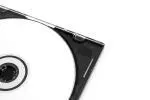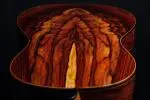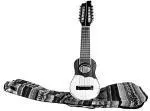Learn what constitutes copyright infringement of musical works. Understand how unauthorized use of songs, lyrics, and recordings violates music creators’ rights.


Learn what constitutes copyright infringement of musical works. Understand how unauthorized use of songs, lyrics, and recordings violates music creators’ rights.

Copyright grants creators of original works exclusive rights over reproduction, distribution, adaptation, and public display. Learn how this legal protection empowers musicians.

Uncover the origins, evolution, and lasting impact of the Chamberlin, the first sample-based keyboard created by Harry Chamberlin in 1940s California.

Learn how cadences shape musical narratives through tension and release. A cadence concludes a musical thought.

Learn what defines the compact disc format that replaced records and tapes – its origins, audio encoding, manufacturing process, longevity, quality debates and legacy.

What is a Chord? Learn chord fundamentals including construction, qualities, notation, and role in harmony.

Discover the rhythmic guide that transformed music production. Explore the world of click tracks and their pivotal role in synchronization.

Learn everything you need to know about utilizing channels for audio production – from routing and signal flow to mixing techniques.

Discover what compressors do, why they’re useful, their key parameters, how to apply compression techniques, and the top software compressor plugins available.

The cathode-ray tube (CRT) is a vacuum tube that generates images by controlling an electron beam to light up phosphor coatings on the screen’s interior.

Known scientifically as Dalbergia retusa, Cocobolo is a rosewood variant found in Nicaragua, Panama, and Mexico. Its colorful spectrum, density, and oiliness make it an excellent material for crafting long-lasting, aesthetically pleasing musical instruments with rich tonal qualities.
A capacitor is a passive electronic component that stores energy in an electrostatic field between two conductive plates. Capacitors are fundamental components in various electronic applications, from power supply filtering to signal conditioning.
Capacitance describes a system’s ability to store an electric charge. This is the principle that drives the operation of capacitors, components designed to store and distribute electrical energy, playing a significant role in many electronic systems.
Cathode stripping represents the potential physical harm to a vacuum tube’s cathode surface due to ion bombardment, often resulting from voltage application before adequate cathode warming.
Cathode sputtering refers to a process in vacuum tube amplifiers where stray gas molecules become ionized, accelerate towards the negatively charged cathode, and physically damage its surface by knocking off pieces of the cathode material.
Cathode poisoning is a destructive phenomenon in tube amplifiers, resulting from a high-resistance chemical layer forming between the cathode tube and the oxide coating, reducing the tube’s gain and increasing noise.
Cathode biased refers to an amplifier setting where the output stage is adjusted based on the voltage drop across a resistor connected to the cathode element of the power tubes, resulting in a warm, vintage tone.
In the world of electronics, a cathode is a terminal in a polarized electrical device where current flows out. This terminal is often negatively charged, although it can be positively charged in certain devices like batteries.

The charango is a cherished symbol of Andean music, with its compact size and distinctive sound.
Crossfade is a fundamental technique in audio production where one sound gradually decreases in volume while another simultaneously increases, leading to a smooth transition between the two.
